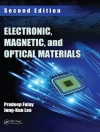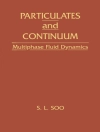Nanoindentation, Third Edition gives a detailed account of the most up-to-date research in this important field of materials testing. As in previous editions, extensive theoretical treatments are provided and explained in a clear and consistent manner that will satisfy both experienced and novice scientists and engineers. Additionally, numerous examples of the applications of the technique are provided directly from manufacturers of nanoindentation instruments. A helpful series of appendices provides essential reference information that includes a list of frequently asked questions.
The new edition has been restructured to provide results of the latest research and developments in the field of mechanical testing while retaining the essential background and introductory, but authoritative nature, of the previous editions. The new edition also expands on the instrumentation and applications chapters by including material sourced direct from the instrument manufacturers in this field.
Aimed at graduate student level, this book is designed to fill a need associated with the use of nanoindentation as a quantitative test method for mechanical properties of small volumes of materials.
Содержание
1: Contact Mechanics.- 2: Nanoindentation Testing.- 3: Analysis of Nanoindentation Test Data.- 4: Factors Affecting Nanoindentation Test Data.- 5: Simulation of Nanoindentation Test Data.- 6: Scaling Relationships in Nanoindentation.- 7: Time-Dependent Nanoindentation.- 8: Nanoindentation of Thin Films and Small Volumes of Materials.- 9: Other Techniques in Nanoindentation.- 10: Nanoindentation Test Standards.- 11: Nanoindentation Instrumentation.- 12: Applications of Nanoindentation.- Appendix 1: Elastic Indentation Stress Fields.- Appendix 2: Surface Forces, Adhesion and Friction.- Appendix 3: Common Indenter Geometries.- Appendix 4: Non-Linear Least Squares Fitting.- Appendix 5: Properties of Materials.- Appendix 6: Frequently Asked Questions.- Appendix 7: Specifications for a Nanoindenter.
Об авторе
Tony Fischer-Cripps has been teaching undergraduate students in Physics and Electronics since 1985. He first studied Automotive Engineering at Technical College, then went on to do an Applied Physics degree course at the University of Technology, Sydney and finally, undertook a Ph D at the University of Sydney. Dr Fischer-Cripps spent two years working at the National Bureau of Standards in the United States before returning to Australia in 1996 to take up a teaching position at the University of Technology, Sydney. Dr Fischer-Cripps then headed the surface mechanics group at the CSIRO Division of Industrial Physics for 6 years before managing his own nanoindentation instrument company in 2005.












